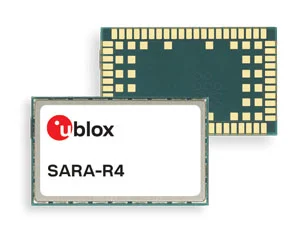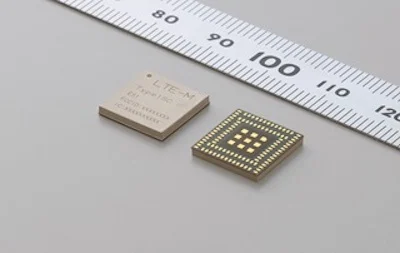Introduction
This commentary will provide an in-depth analysis of the key developments highlighted in the article titled “u-blox Module Release, STMicro, and Arduino: Please find the compilation of the latest news on IoT Communications below: The article is an account of the latest announcements and releases in three significant players in the IoT hardware – u-blox, STMicroelectronics and Arduino. As for each of the sections of the commentary, one of the announcements will be presented with its background, reflecting on the importance and implications, as well as the likely future developments concerning IoT connectivity solutions.
u-blox Focuses on Global Coverage
The first announcement discussed in the original article is from u-blox regarding the commercial release of their SARA‐R410M‐02B LTE module. u-blox is a leading provider of cellular IoT modules and positioning receivers. The SARA‐R410M‐02B is designed to provide global LTE connectivity through a single hardware and firmware configuration that supports 16 bands across LTE Cat M1, EGPRS, and LTE Cat NB1 technologies.
This universal connectivity solution addresses a major challenge for IoT deployments – the ability to seamlessly roam across networks worldwide without needing multiple customized hardware variants. Managing different regional cellular frequencies and protocols has traditionally added complexity and costs for IoT device makers. The SARA‐R410M‐02B simplifies this by incorporating all necessary configurations in a single package. This has important implications for scalability – device manufacturers can develop products targeting the global market from the start without network compatibility issues hindering international expansion.
u-blox has also enabled remote firmware updates and configuration changes for the module via standards like LWM2M and uFOTA. This post-deployment manageability is crucial for IoT networks that need to adapt to changes over prolonged usage cycles sometimes spanning decades. Being able to patch vulnerabilities, upgrade features, or reconfigure settings from a distance ensures the module remains up-to-date and productive throughout its lifespan. The module’s support for challenging environments like indoor/underground locations further expands its addressable use cases.
All things considered, the SARA‐R410M‐02B demonstrates u-blox’s continued leadership in developing cutting-edge cellular IoT solutions. Its global compatibility outright removes a key limitation for manufacturers, opening the door for truly location-agnostic IoT deployments. When combined with post-deployment manageability, this module certainly raises the bar for plug-and-play cellular connectivity in IoT systems.
Miniaturization Trends in IoT Modules
The commentary next discusses the ongoing miniaturization trend in cellular IoT modules highlighted by u-blox’s announcements. Space and size constraints are major considerations in many IoT applications like tracking tags, smart cards, and wearables. Consequently, module vendors continually strive to shrink component footprints while retaining or enhancing capabilities.
u-blox’s past launches of the SARA-410M and SARA-R412M that succeeded the SARA-R404M clearly illustrate this shrinking form factor trajectory. More recently, competitors like Murata have also touted new “world’s smallest” single-chip module designs, showing how cutthroat this miniaturization race has become. But beyond claims, each new shrunken generation demonstrates tangible progress.
Smaller modules allow for more creative device designs while lowering material costs. They also aid power efficiency by reducing onboard real estate demands, allowing more room for larger batteries. This in turn improves usability metrics like longer service intervals between charges. Some modules have decreased by 30-40% in surface area over just a couple of years.
Aside from consumer-facing impacts, miniaturization holds supply chain benefits as well. Modules consuming less PCB space means factories can produce more devices simultaneously, raising overall output. Compact footprints are also easier to assemble via automated pick-and-place machinery.
While size reductions appear incremental, their impacts compound significantly over millions of deployments. The miniaturization march will undoubtedly continue as new fabrication techniques and materials are developed. This ensures cellular connectivity remains a viable option even for the most constrained IoT designs.
STMicroelectronics and Jorjin Technologies Partnership
The next section analyzes STMicroelectronics’ partnership with Jorjin Technologies to develop a new Sigfox IoT module. Sigfox is a leading provider of ultra-narrowband IoT wireless networks optimized for low-data rate communication between constrained devices.
Jorjin contributes its WS211x Sigfox/BLE module featuring STMicro’s cutting-edge BlueNRG-1 BLE SoC and S2-LP sub-1GHz transceiver. Key attributes of this module include an integrated Cortex-M0 MCU, ample memory/storage, wide voltage input range, RF power output up to +27dBm for extended range, and excellent receiver sensitivity.
For STMicro, partnering with specialized module designers like Jorjin allows them to leverage domain expertise and focus on their core competency of ultra-low-power wireless SoCs. Collaboration yields complementary strengths – ST supplies best-in-class short-range wireless chips while Jorjin handles RF integration, mechanical design, and overall module development.
This pre-certified module shortens product development cycles for OEMs by removing wireless connectivity integration efforts. Its wide voltage support and energy harvesting friendliness also enhance deployment flexibility. STmicro’s proven experience in low-power semiconductors further guarantees reliable extended battery life.
Overall, the Jorjin-STMicro module sets a new benchmark for optimized Sigfox connectivity. By combining expertise, they’ve streamlined the integration process – a huge appeal for cost-conscious IoT companies. This partnership model gives OEM customers an out-of-the-box wireless solution while letting providers focus on their strengths. Similar collaborations will likely become the new standard approach.
Arduino Releases New Connectivity Boards
The last part evaluates Arduino’s introduction of the MKR WiFi 1010 and MKR NB 1500 connectivity boards. Arduino being an open source company, involved both in designing hardware and software, meant for hobbyists as well as companies, it is well set to enable the next phase of advanced IoT prototyping and large-scale implementation.
The MKR WiFi 1010 leverages the powerful and energy-efficient ESP32 WiFi SoC while retaining Arduino compatibility. Its integrated Microchip security module enhances network protection. As wireless connectivity becomes more mission-critical, this board establishes Arduino as a viable solution even for production environments with stringent guidelines.
Meanwhile, the MKR NB 1500 taps the wide coverage and range of NB-IoT cellular networks, again bridging the maker and industrial spheres. Both boards’ compatibility with the ubiquitous Arduino ecosystem means they can accelerate prototyping workflows while providing industrial-grade wireless prototypes.
This marries the creativity of open hardware with capabilities expected in commercial-grade systems. It allows small firms to evaluate full-stack wireless product concepts with prototyping-friendly tools before committing to tailored development. Larger entities gain early access to emerging wireless technologies.
Overall, Arduino’s foray into purpose-built connectivity exposes its platforms to expanded markets seeking standardized IoT building blocks. By streamlining wireless integration, more clients can experiment freely before defining production-oriented requirements. This will spur further cross-pollination between tinkering and rigorous industrial projects.
Conclusion
In summary, this commentary analyzed key recent developments from u-blox, STMicroelectronics, and Arduino highlighted in the original article. Each highlights ongoing progress towards improving cellular and wireless connectivity for IoT applications. Miniaturization, global compatibility, optimized integrated solutions, and bridging open prototyping with rigorous deployments were several themes that emerged.
Continued partnership-based innovation and focus on removing integration obstacles will drive further expansion of the IoT ecosystem. Standardized connectivity blocks expedite experimentation. Developments that simplify global scalability and extend finite battery lives through shrinkage or higher efficiency also have widespread impacts. Overall, the analyzed announcements showcase how leaders in this space are raising the bar for plug-and-play IoT connectivity.
FAQ
Q: What is an IoT module?
A: An IoT module is defined as an electronic subsystem on a single circuit board that includes all the wireless connectivity functions – such as cellular, WiFi, Bluetooth, and the microcontroller needed to support basic IoT functionality. It enables companies that produce IoT devices to Wirelessly connect their products but does not require companies to build the radio hardware and firmware from the ground up.
Q: What are the key benefits of miniaturized IoT modules?
A: Miniaturized modules allow for more creative device designs in constrained spaces. They also lower material costs and enhance power efficiency by reducing onboard real estate demands. Mini modules further aid usability metrics like longer service life between charges. From a supply chain perspective, compact footprints improve factory output and automated production line handling.
Q: How does global compatibility benefit IoT deployments?
A: Seamless global roaming capability removes a major limitation that otherwise hinders truly location-agnostic IoT solutions. It simplifies product development by eliminating the need for region-specific hardware variants. This enables scalability as manufacturers can roll out the same devices globally from the start. It also streamlines logistics, support, and deployment in multi-country projects.
Q: What is an SoC and why is it important in IoT modules?
A: SoC stands for “system on chip” – it integrates multiple components of a computer or other electronic system into a single chip, thus reducing costs, power usage, and space requirements. Having low-power IoT-optimized SoCs like STMicro’s BLE solutions allows module vendors to tightly optimize wireless performance, efficiency, and form factors. This helps address crucial considerations for constrained battery-powered IoT edge nodes.
Q: How does partnering benefit module vendors and OEMs?
A: Partnerships allow companies to leverage complementary expertise. Module vendors can focus on wireless/RF integration expertise while partners provide proven low-power chips. This optimizes solutions. For OEMs, pre-certified partner modules remove their wireless integration efforts, speeding development cycles and reducing costs to certify new products.



